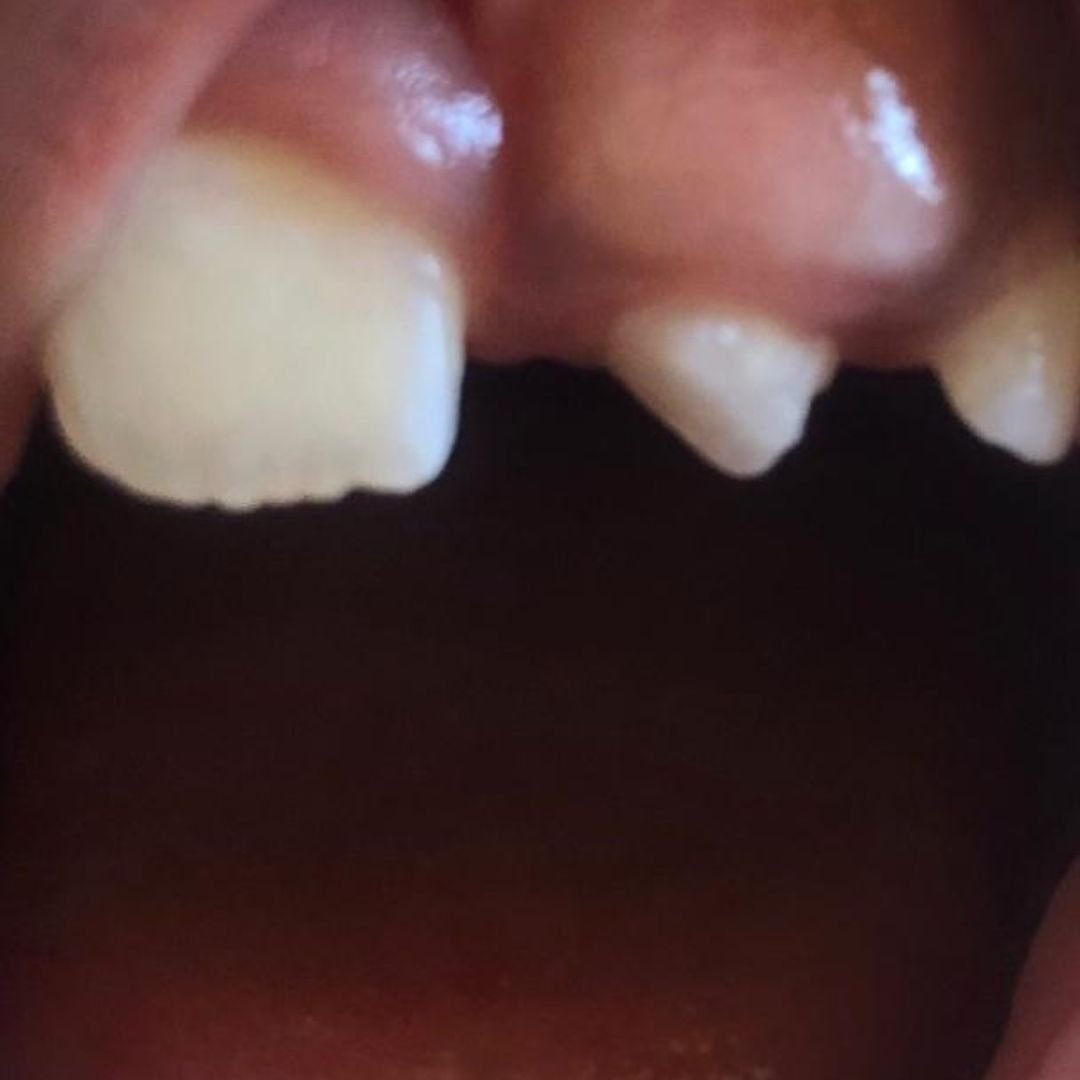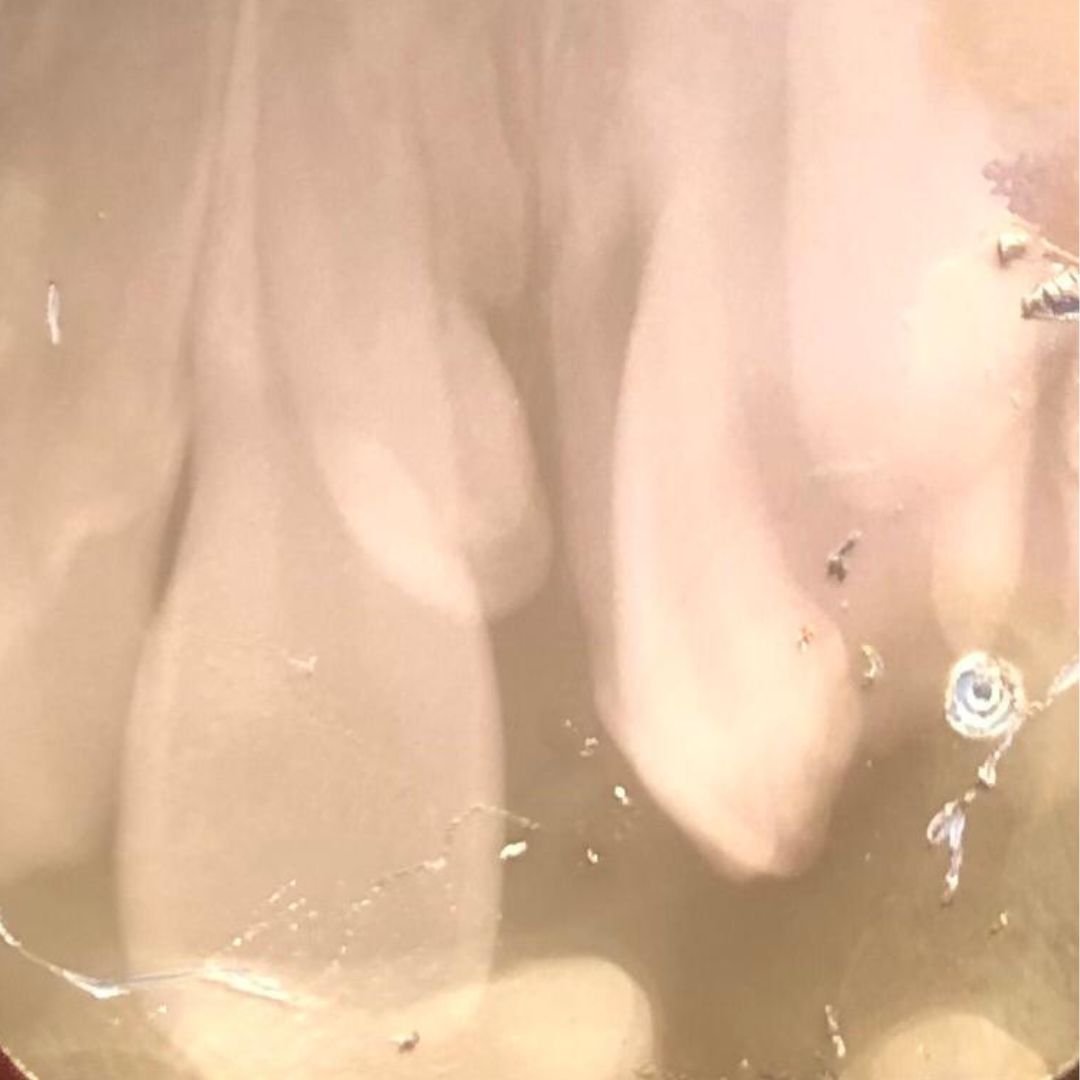Mesodens is a dental condition where a person has extra teeth, usually found in the middle of the upper jaw.
Mesodens, characterized by the presence of supernumerary teeth, can pose challenges in pediatric dentistry. This case study presents the successful management of Mesodens in a child who reported to the clinic. The effective extraction of milk teeth paved the way for the natural eruption of permanent teeth, ensuring optimal oral health and aesthetics.
Patient Profile
Our patient was brought to the dental clinic by his parents with concerns regarding his dental health. Upon examination, it was evident that he had a case of Mesodens. The supernumerary teeth were affecting his oral health, leading to concerns about the eruption of permanent teeth.
Medical and Dental History
The patient’s medical history was unremarkable, with no known systemic conditions or medication use that could contribute to Mesodens. His dental history revealed delayed exfoliation of certain primary (milk) teeth in the affected areas, which was causing aesthetic and functional issues.
Diagnosis
Clinical examination and radiographic assessment confirmed the diagnosis of Mesodens. The presence of supernumerary teeth was evident, particularly in the maxillary anterior region. These extra teeth were causing crowding, misalignment, and a blockage in the path of permanent teeth eruption. The patient’s condition was classified as moderate Mesodens, with potential for complications if left untreated.
Treatment Plan
Given the patient’s age and the extent of Mesodens, a comprehensive treatment plan was developed. The primary goal was to create space for the natural eruption of permanent teeth by extracting the supernumerary milk teeth. This approach aimed to alleviate crowding and prevent potential dental issues in the future.
Preoperative Assessment
Before initiating treatment, a thorough preoperative assessment was conducted. This included a review of the patient’s overall oral health, discussions with the patient’s parents regarding the treatment plan, and informed consent. The family was provided with information about the procedure, its benefits, and potential risks.
Extraction of Supernumerary Teeth
Under local anesthesia, the surgical extraction of the supernumerary milk teeth was performed. The procedure was carefully executed to ensure minimal discomfort and anxiety for the young patient. Emphasis was placed on creating sufficient space for the unimpeded eruption of permanent teeth.
Postoperative Care and Follow-up
The patient received postoperative care instructions, including guidance on oral hygiene, dietary restrictions, and pain management. Follow-up appointments were scheduled to monitor the healing process and address any concerns or complications.
The immediate postoperative period saw some mild discomfort, which is typical following dental extractions. However, the recovery process was generally uneventful. The patient and his family reported that the discomfort was manageable and well-tolerated.
Over the course of a few weeks, significant improvements were observed. With the supernumerary teeth successfully extracted, the impacted permanent teeth began to emerge naturally. The crowding issues that had previously affected the patient’s oral health and aesthetics were alleviated, and his smile began to transform.
Mesodens is a condition characterized by the presence of extra teeth, often located in the anterior maxillary region. It can lead to various dental issues, including crowding, misalignment, and obstruction of permanent teeth eruption. Early diagnosis and intervention are crucial to mitigate these complications.
In this case, the decision to surgically extract the supernumerary milk teeth was made to create space for the natural eruption of permanent teeth. This approach is particularly appropriate for pediatric patients as it promotes optimal dental development without the need for extensive orthodontic treatment.
This case study underscores the successful management of Mesodens in a pediatric patient. By extracting the supernumerary milk teeth, space was created for the unimpeded eruption of permanent teeth. The patient’s improved oral health and transformed smile highlight the importance of early intervention in cases of Mesodens.
Early diagnosis and a tailored treatment plan can make a significant difference in addressing Mesodens, especially in young patients. This case exemplifies the successful collaboration between dental professionals and the positive impact of such interventions on a child’s overall oral health and aesthetics. The patient’s parents expressed immense satisfaction with the results, and the child now enjoys improved dental well-being and self-confidence.

Suspected Mesodens in a Child

X-ray reveals the existence of an additional tooth
Mesodens is a dental condition characterized by the presence of extra teeth, often located in the middle of the upper jaw. These extra teeth are referred to as supernumerary teeth and can disrupt the alignment of the permanent teeth.
The exact cause of Mesodens is not always clear, but it can be influenced by genetic factors. Certain medical conditions or genetic syndromes may also increase the likelihood of developing supernumerary teeth.
Mesodens is considered a relatively common dental condition, and it can affect both children and adults. However, its prevalence varies among different populations and age groups.
Mesodens is typically diagnosed through dental examinations and X-rays. Dentists and orthodontists can identify the presence of supernumerary teeth and assess their impact on the patient’s oral health
The main treatment options for Mesodens include the surgical extraction of supernumerary teeth and orthodontic intervention to correct any misalignment or dental issues caused by the extra teeth. The choice of treatment depends on the specific case and its impact on the patient’s oral health. Early diagnosis and intervention are crucial for a successful outcome.
Mesodens is a dental condition characterized by the presence of extra teeth, often located in the middle of the upper jaw. These extra teeth are referred to as supernumerary teeth and can disrupt the alignment of the permanent teeth.
The exact cause of Mesodens is not always clear, but it can be influenced by genetic factors. Certain medical conditions or genetic syndromes may also increase the likelihood of developing supernumerary teeth.
Mesodens is considered a relatively common dental condition, and it can affect both children and adults. However, its prevalence varies among different populations and age groups.
Mesodens is typically diagnosed through dental examinations and X-rays. Dentists and orthodontists can identify the presence of supernumerary teeth and assess their impact on the patient’s oral health
The main treatment options for Mesodens include the surgical extraction of supernumerary teeth and orthodontic intervention to correct any misalignment or dental issues caused by the extra teeth. The choice of treatment depends on the specific case and its impact on the patient’s oral health. Early diagnosis and intervention are crucial for a successful outcome.
Celebrate your smile transformation with us. Schedule your appointment today and let us help you achieve the confident, healthy smile you deserve.